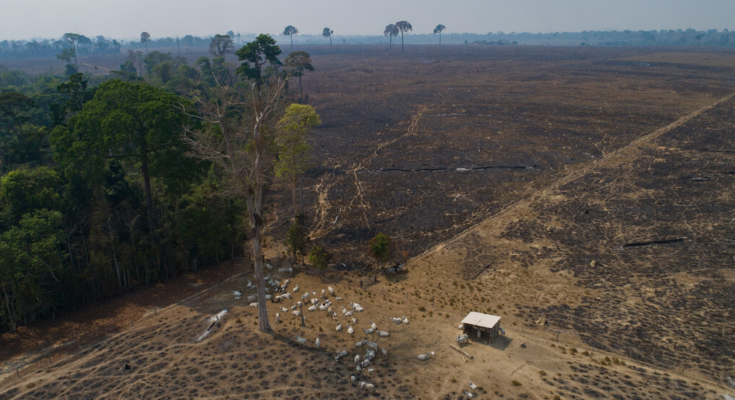Scrutiny of fashion’s connection to deforestation in the Amazon surged in 2019, when images of rainforest fires that were started to clear land for agriculture went viral. LVMH announced shortly afterward that it would donate more than $11 million to fight the Amazon fires, and H&M and VF Corporation, which owns Timberland and Vans, pledged to stop buying Brazilian leather unless it wasn’t tied to deforestation.
These brands were all named in the study, “Nowhere to Hide: How the Fashion Industry Is Linked to Amazon Rainforest Destruction,” by the conservation-focused nonprofit Stand.Earth and its research arm, Stand Research Group (S.R.G.), which used customs data to illustrate how leather flowed out of the deforested Amazon. The report was released in November in collaboration with Slow Factory, a climate and culture nonprofit, and Model Mafia, an activist collective.
Identifying the Problem
S.R.G. analyzed nearly 500,000 rows of Brazilian customs data cross-checked with import data collected from leather processors in countries including China, Vietnam and Italy that supply companies including LVMH, H&M, VF Corporation, Nike, Prada, Adidas, Tapestry (the owner of Coach) and Zara.
The S.R.G. team sought to establish brands’ connections to deforestation by tracing exports back through major leather suppliers in Brazil, and referring to other research connecting those suppliers to deforestation. According to the study, JBS, for example, the country’s largest beef and leather exporter, supplies leather processors and manufacturers that in turn supply Coach and others. In a statement sent to The Times, JBS said that it “has no tolerance for illegal deforestation” and that it has “blocked more than 14,000 supplier farms for failure to comply with our policies and standards.”
While the S.R.G. report doesn’t prove that your Coach bag is made from “tainted leather” — the term S.R.G. uses for leather that helps drive deforestation — the more connections a brand has to companies that may have a role in deforestation, the higher the risk, said Greg Higgs, the study’s lead researcher.



